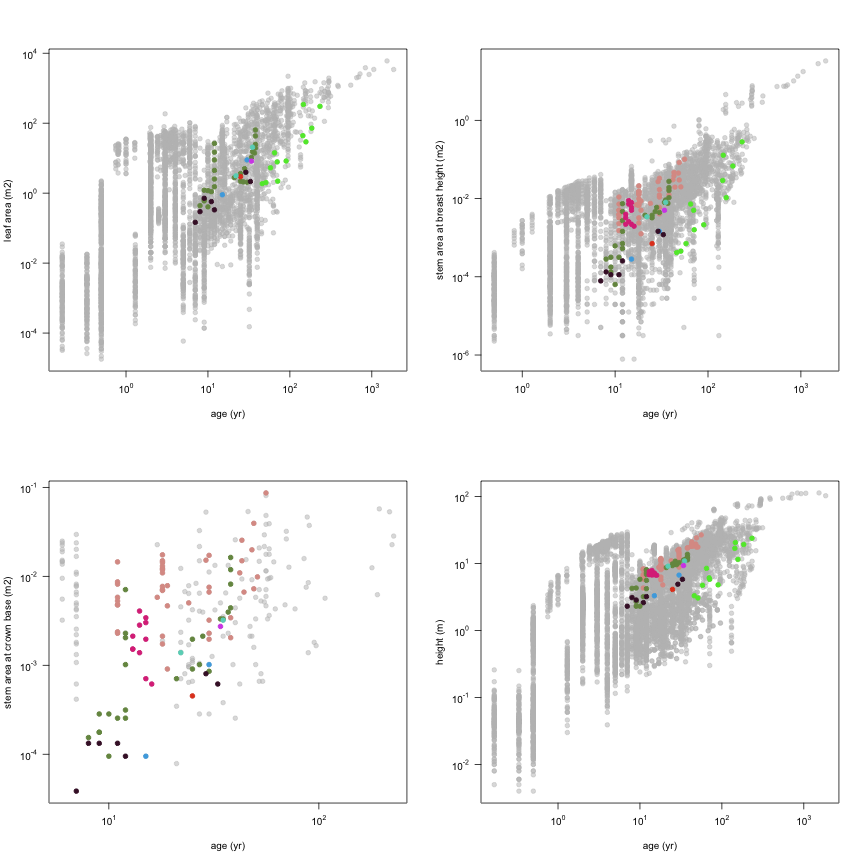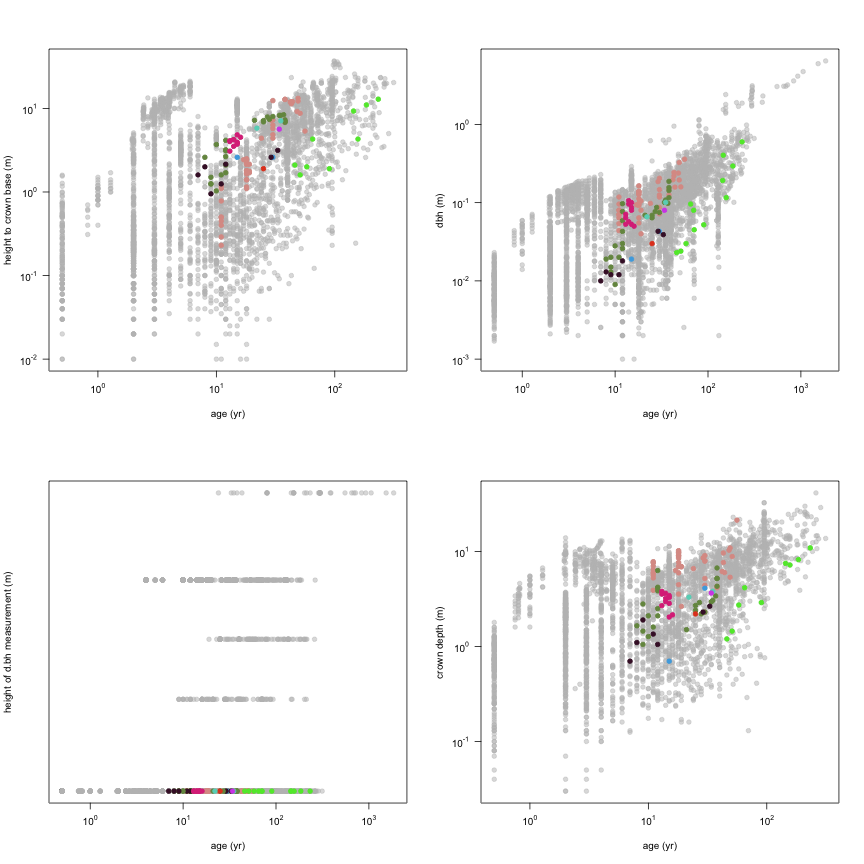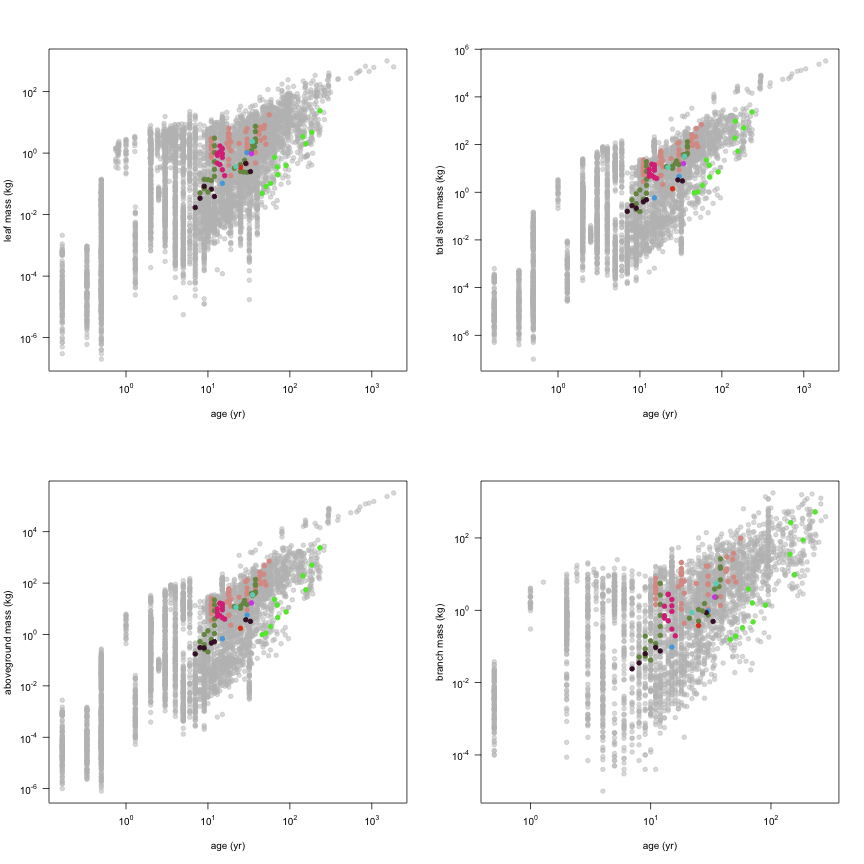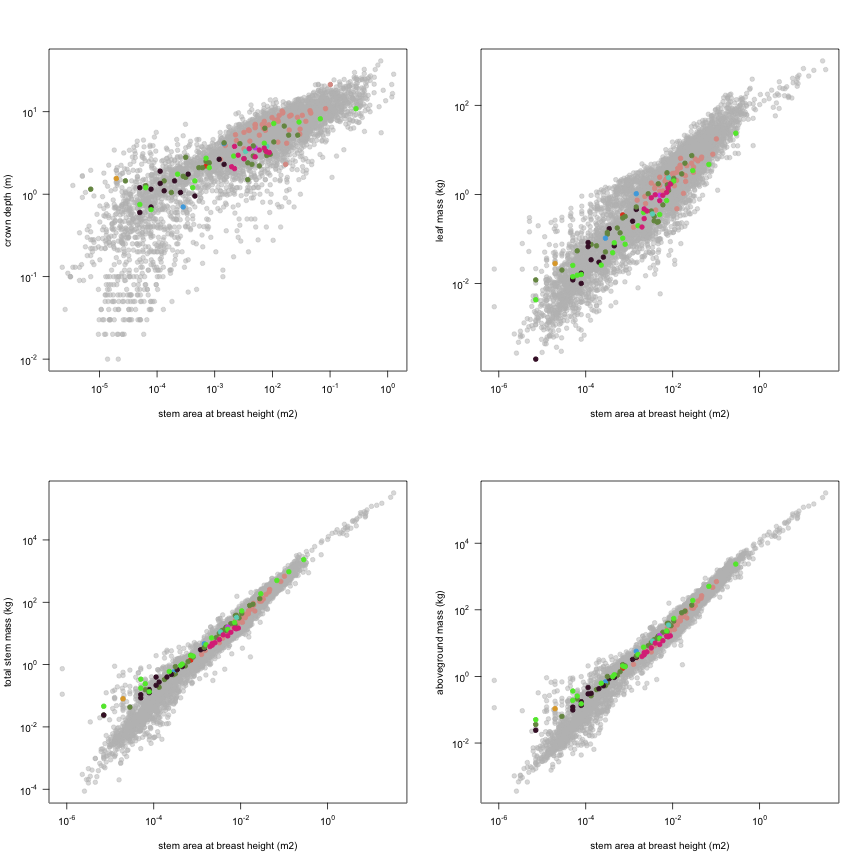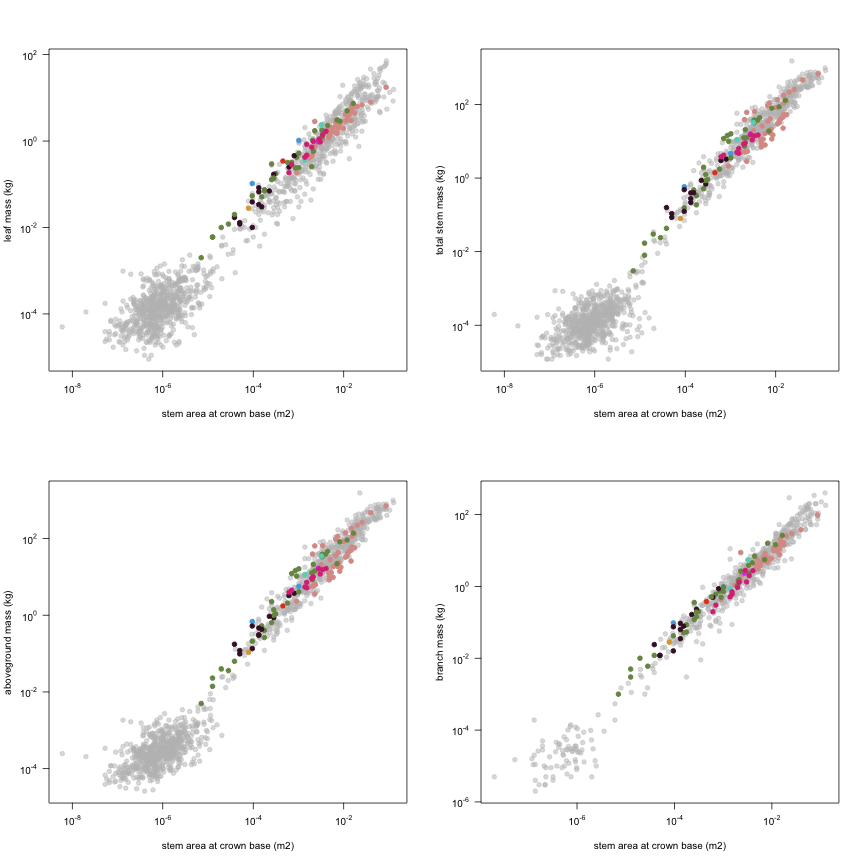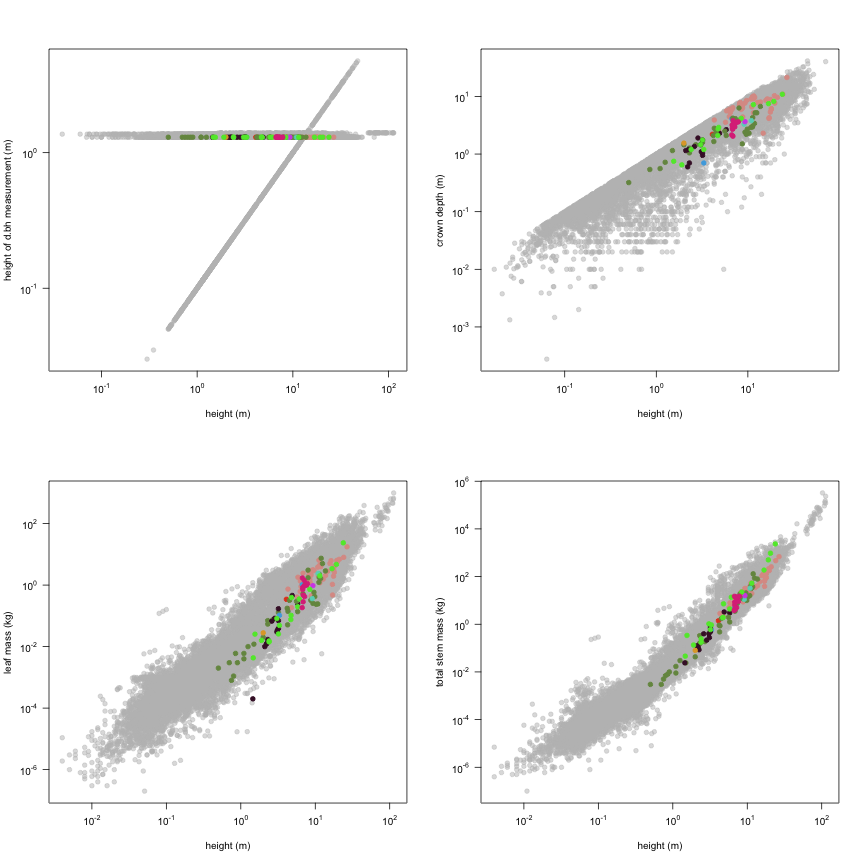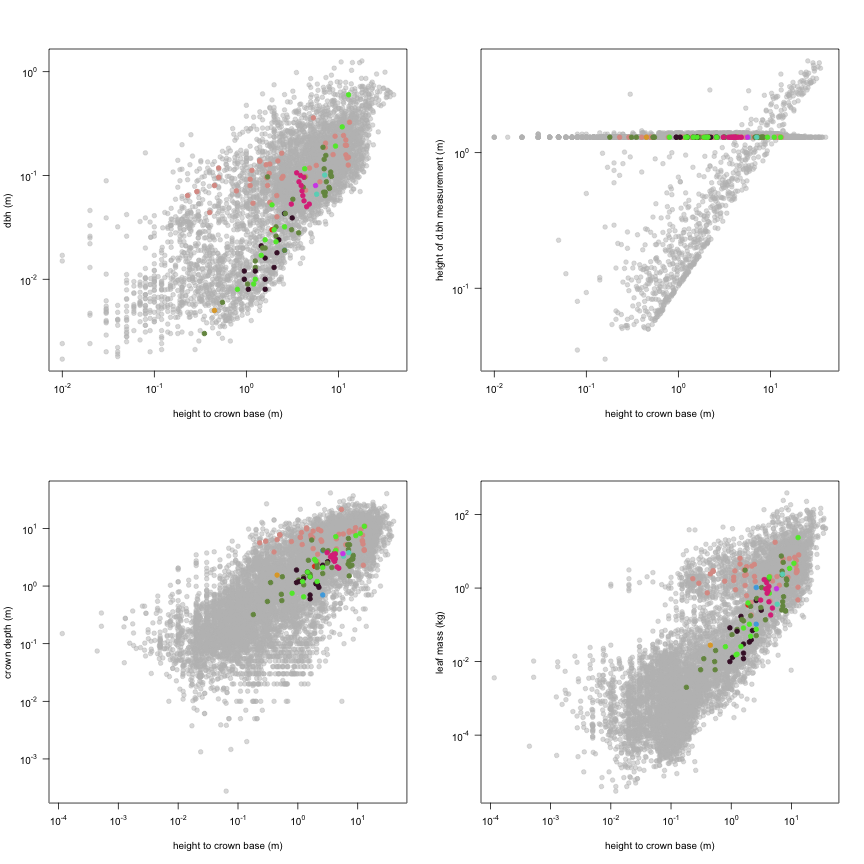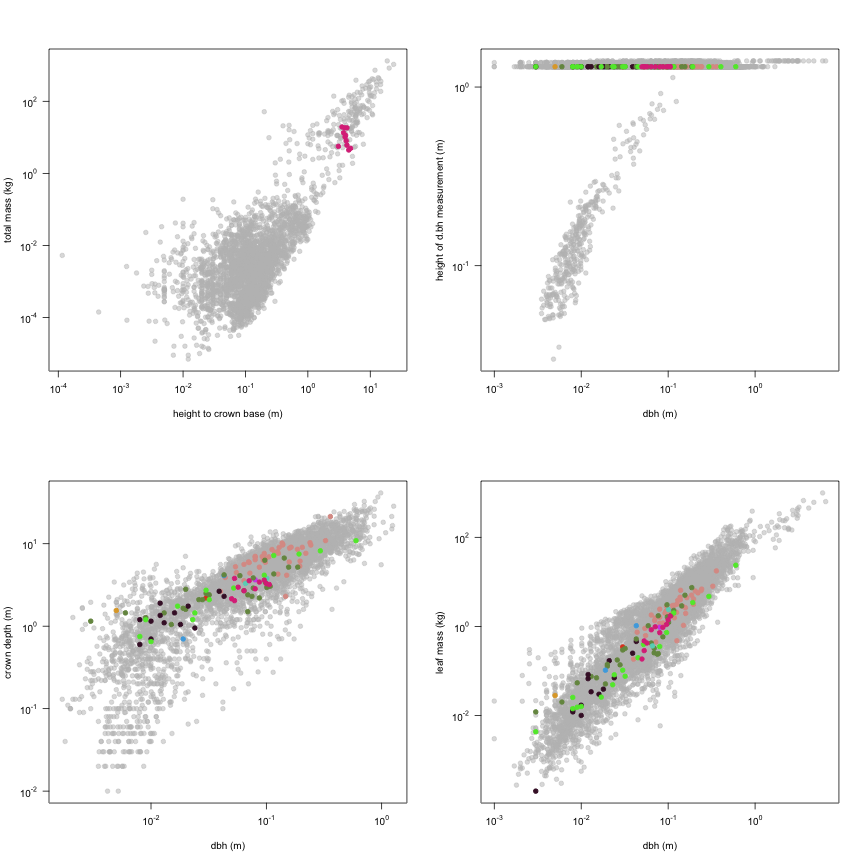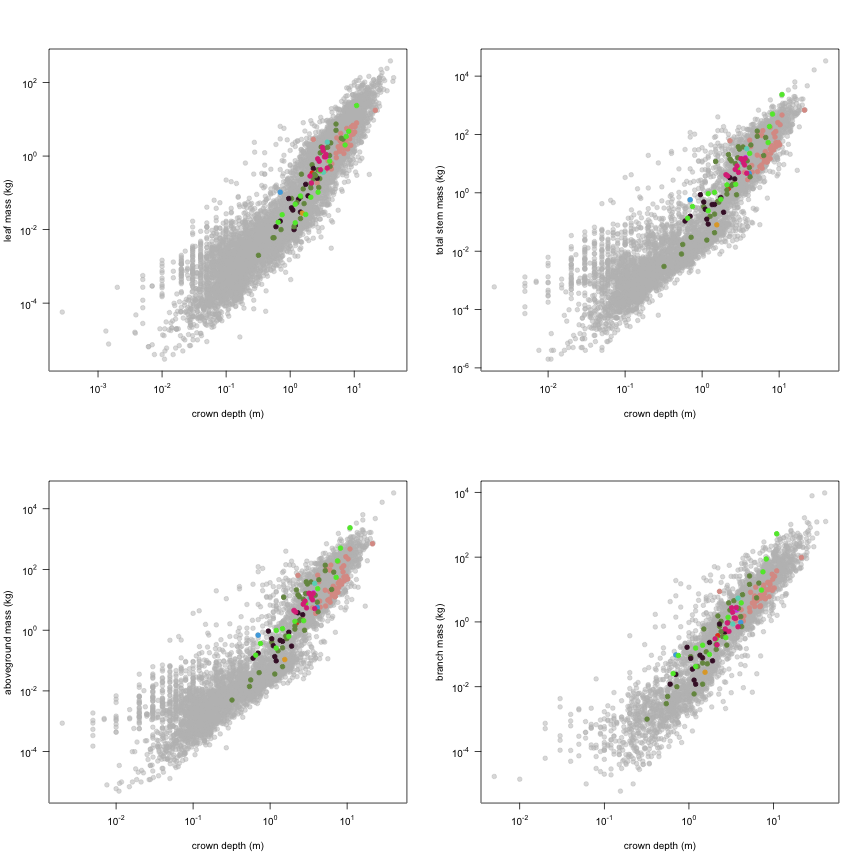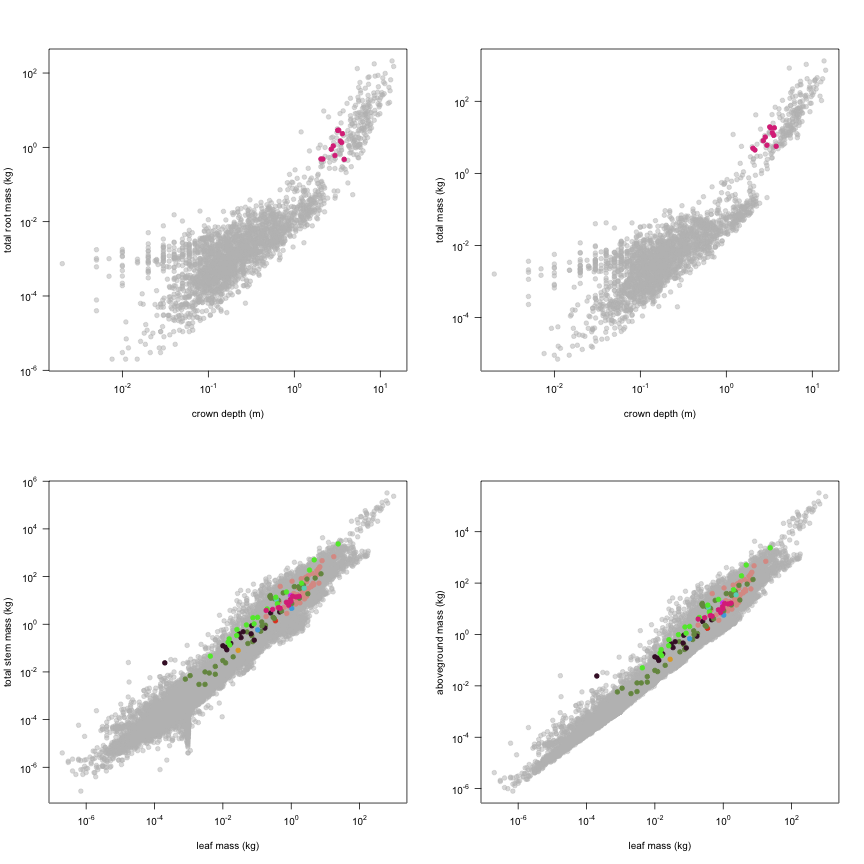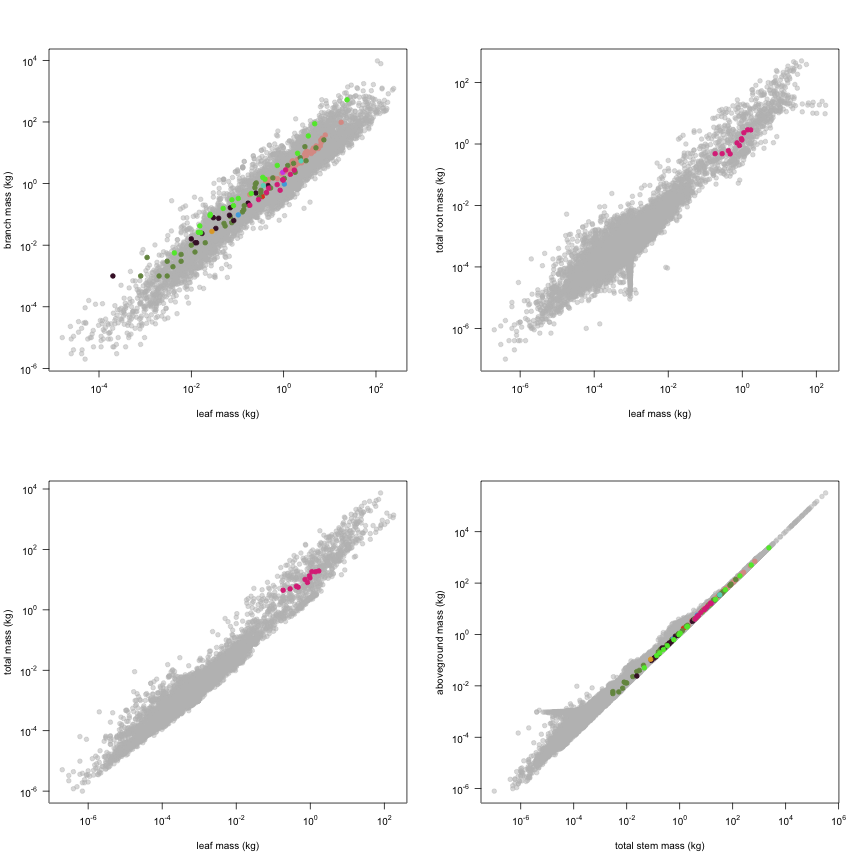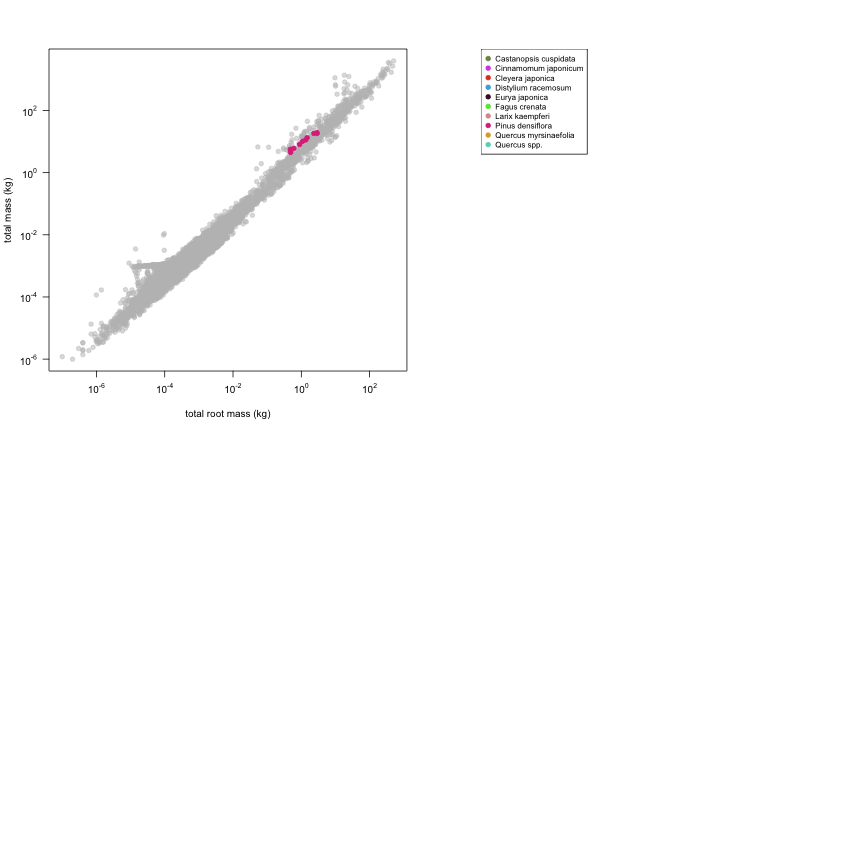-
Notifications
You must be signed in to change notification settings - Fork 19
FLFU1963
Data contributor: Masae I. Ishihara, Hajime Utsugi, Hiroyuki Tanouchi, Tsutom Hiura
Email: [email protected]
Address:
- Graduate School for International Development and Cooperation, Hiroshima University, 1-5-1 Kagamiyama, Higashi-Hiroshima 739-8529, Japan
- Forestry and Forest Products Research Institute (FFPRI), 1 Matsunosato, Tsukuba, Ibaraki, 305-8687, Japan
- Hokkaido Research Center, Forestry and Forest Products Research Institute (FFPRI), Hitsujigaoka-7, Toyohira, Sapporo, Hokkaido, 062-8516, Japan
- Tomakomai Research Station, Field Science Center for Northern Biosphere, Hokkaido University, Takaoka, Tomakomai 053-0035, Japan
Citation: group R (1963). 'Forest production data from the perspective of material cycle 1.' Forestry Laboratories of Kyoto University, Tokyo University, Niigata University and Shinshu University.
DOI:
Abstract:
The dataset includes records for 133 individuals from 10 species belonging to 5 family(ies), presenting 4 functional type(s), growing in 3 condition(s) within 1 major type(s) of habitat, with data included for the following variables:
| Variable | Label | Units | N | Min | Median | Max |
|---|---|---|---|---|---|---|
| latitude | Latitude | deg | 133 | 32 | 35 | 37 |
| longitude | Longitude | deg | 133 | 131 | 138 | 140 |
| age | Age | yr | 106 | 7 | 19 | 233 |
| a.lf | Leaf area | m2 | 67 | 0.053 | 2.1 | 343 |
| a.stbh | Stem area at breast height | m2 | 124 | 0.0000071 | 0.004 | 0.28 |
| a.stbc | Stem area at crown base | m2 | 108 | 0.0000071 | 0.0022 | 0.087 |
| h.t | Height | m | 133 | 0.5 | 6.9 | 27 |
| h.c | Height to crown base | m | 122 | 0.18 | 2.6 | 13 |
| d.bh | Dbh | m | 124 | 0.003 | 0.071 | 0.6 |
| h.bh | Height of d.bh measurement | m | 133 | 1.3 | 1.3 | 1.3 |
| c.d | Crown depth | m | 122 | 0.32 | 3.5 | 21 |
| m.lf | Leaf mass | kg | 132 | 0.0002 | 0.55 | 24 |
| m.st | Total stem mass | kg | 133 | 0.003 | 8.6 | 2338 |
| m.so | Aboveground mass | kg | 132 | 0.005 | 9.4 | 2362 |
| m.br | Branch mass | kg | 133 | 0.001 | 1.3 | 525 |
| m.rt | Total root mass | kg | 11 | 0.48 | 1.1 | 2.9 |
| m.to | Total mass | kg | 11 | 4.5 | 10 | 19 |

And locally within the country:
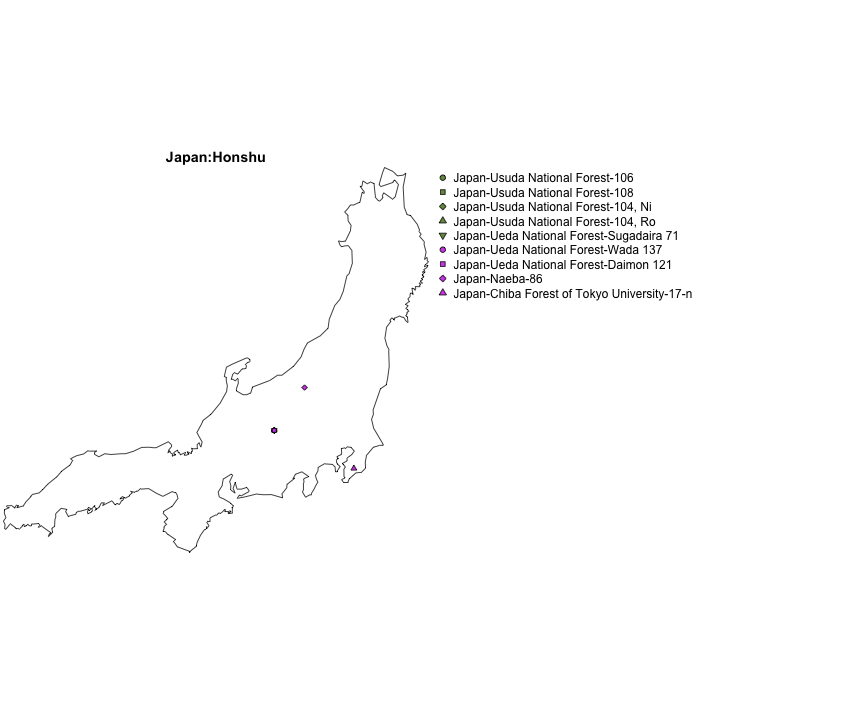

The sites sampled are:
| Location | Longitude | Latitude | Vegetation |
|---|---|---|---|
| Japan-Usuda National Forest-106 | 138.0 | 36.0 | Temperate forest |
| Japan-Usuda National Forest-108 | 138.0 | 36.0 | Temperate forest |
| Japan-Usuda National Forest-104, Ni | 138.0 | 36.0 | Temperate forest |
| Japan-Usuda National Forest-104, Ro | 138.0 | 36.0 | Temperate forest |
| Japan-Ueda National Forest-Sugadaira 71 | 138.0 | 36.0 | Temperate forest |
| Japan-Ueda National Forest-Wada 137 | 138.0 | 36.0 | Temperate forest |
| Japan-Ueda National Forest-Daimon 121 | 138.0 | 36.0 | Temperate forest |
| Japan-Sumitomo Forestry Co. Forest-6 | 130.8 | 32.2 | Temperate forest |
| Japan-Sumitomo Forestry Co. Forest-3 | 130.8 | 32.2 | Temperate forest |
| Japan-Sumitomo Forestry Co. Forest-7 | 130.8 | 32.2 | Temperate forest |
| Japan-Naeba-86 | 138.8 | 36.9 | Temperate forest |
| Japan-Chiba Forest of Tokyo University-17-n | 140.1 | 35.2 | Temperate forest |
The growing conditions of sampled plants was:
| Location | growingCondition |
|---|---|
| Japan-Usuda National Forest-106 | plantation managed, field wild, |
| Japan-Usuda National Forest-108 | plantation managed, field wild, |
| Japan-Usuda National Forest-104, Ni | plantation managed, field wild, |
| Japan-Usuda National Forest-104, Ro | plantation managed, field wild, |
| Japan-Ueda National Forest-Sugadaira 71 | plantation managed, field wild, |
| Japan-Ueda National Forest-Wada 137 | plantation managed, field wild, |
| Japan-Ueda National Forest-Daimon 121 | plantation managed, field wild, |
| Japan-Sumitomo Forestry Co. Forest-6 | plantation managed, field wild, |
| Japan-Sumitomo Forestry Co. Forest-3 | plantation managed, field wild, |
| Japan-Sumitomo Forestry Co. Forest-7 | plantation managed, field wild, |
| Japan-Naeba-86 | plantation managed, field wild, |
| Japan-Chiba Forest of Tokyo University-17-n | plantation managed, field wild, |
| Species | Family | Pft |
|---|---|---|
| Larix kaempferi | Pinaceae | deciduous gymnosperm, evergreen angiosperm, deciduous angiosperm, evergreen gymnosperm |
| Castanopsis cuspidata | Fagaceae | deciduous gymnosperm, evergreen angiosperm, deciduous angiosperm, evergreen gymnosperm |
| Distylium racemosum | Hamamelidaceae | deciduous gymnosperm, evergreen angiosperm, deciduous angiosperm, evergreen gymnosperm |
| Eurya japonica | Theaceae | deciduous gymnosperm, evergreen angiosperm, deciduous angiosperm, evergreen gymnosperm |
| Quercus spp. | Fagaceae | deciduous gymnosperm, evergreen angiosperm, deciduous angiosperm, evergreen gymnosperm |
| Cleyera japonica | Theaceae | deciduous gymnosperm, evergreen angiosperm, deciduous angiosperm, evergreen gymnosperm |
| Cinnamomum japonicum | Lauraceae | deciduous gymnosperm, evergreen angiosperm, deciduous angiosperm, evergreen gymnosperm |
| Quercus myrsinaefolia | Fagaceae | deciduous gymnosperm, evergreen angiosperm, deciduous angiosperm, evergreen gymnosperm |
| Fagus crenata | Fagaceae | deciduous gymnosperm, evergreen angiosperm, deciduous angiosperm, evergreen gymnosperm |
| Pinus densiflora | Pinaceae | deciduous gymnosperm, evergreen angiosperm, deciduous angiosperm, evergreen gymnosperm |
Sampling strategy: Sample trees were selected to represent each diameter class or all trees within a plot were felled. Usuda National Forest and Ueda National Forest were surveyed on 25 July to 13 August, 1961. Sumitomo Forestry Co. Forest (stand 6: elevation = 500 m a.s.l., upper slope; slope = 30 degree; stand 3: 200 m, lower slope; stand 7: near stand 6) was surveyed on 23 October to 1 November, 1961. Naeba was surveyed in September 1961. Sample trees were felled at the base, and diameter at breast height, tree height, height of the lowest living branch, and length of longest branch were measured. Sample trees were then treated with the stratified clip technique by cutting them into parts contained in horizontal layers of 0-0.3 m, 0.3-1.3 m, 1.3-2.3 m, and at intervals of 1 m upward. For conifer species, branches and leaves were separated into layers according to the height of whorl branch which branches and leaves are attached. Chiba Forest of Tokyo University was surveyed on 27 November to 2 December 1961 for aboveground and 13-15 December 1961 for root. Trees in this stand were 12-15 years old and regenerated naturally on a land formally used as forest tree nursery. Sample trees were cut into layers based on stem age. Branches and leaves within each layer were further separated based on their ages (current-year, one year, etc.). Only main roots were excavated and weighted. Multiple-stemmed trees were excluded for this data paper.
Leaf area: Leaf area was estimated for broadleaf species from fresh mass and leaf area per fresh mass which were obtained from a subsample (100-200 g in fresh mass) collected from several sampled trees at each stand.
Stem cross sectional area: Estimated from stem diameter.
Height: Measured after sample trees were cut down (Forestry Laboratories of Kyoto University, Tokyo University, Niigata University, and Shinshu University 1963).
Biomass: Fresh mass of components (stem, branches, and leaves) in each layer were measured. Measured fresh mass was converted to dry mass from the ratio of dry to fresh mass. The ratio was estimated for each stand and each component from a subsample (several hundreds to several thousands g) taken from several sampled trees.
Other variables: M.I. Ishihara, H. Utsugi, H. Tanouchi, and T. Hiura conducted formal search of reference databases, digitized raw data, and created meta data based on the references (Forestry Laboratories of Kyoto University, Tokyo University, Niigata University, and Shinshu University 1963; Kan et al. 1965 Bull. Kyoto. Univ. For. 37:55-75). Species name and family names were converted by M.I. Ishihara according to the following references: Satake Y, Hara H (1989a) Wild flower of Japan Woody plants I (in Japanese). Heibonsha, Tokyo; Satake Y, Hara H (1989b) Wild flower of Japan Woody plants II (in Japanese). Heibonsha, Tokyo.
This is how the study FLFU1963 fits in the entire dataset (grey). each colour represents a species. A legend of species names with colours is included at the end for reports with 1 < n < 20 species.
